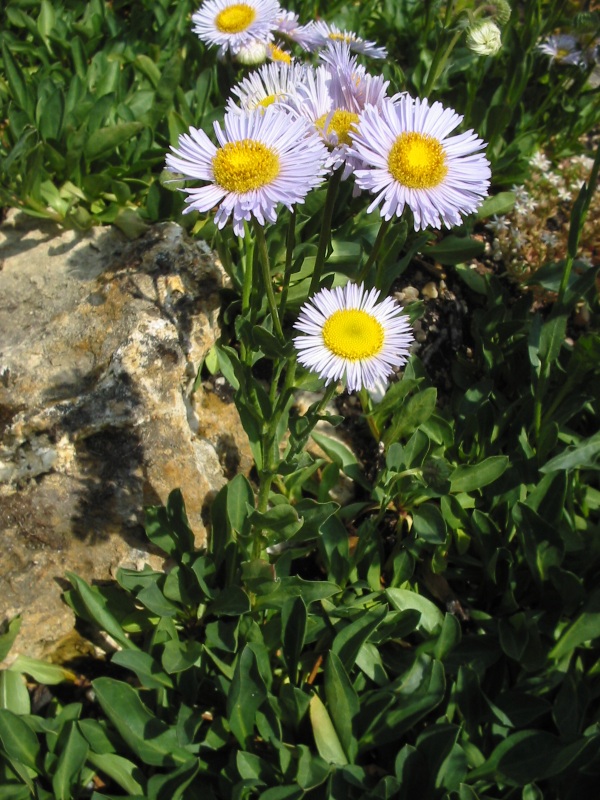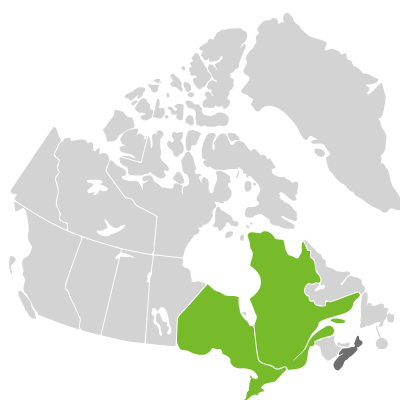 Known to be toxic - Toxic to mammals if ingested.
Known to be toxic - Toxic to mammals if ingested.

Source: Bouba
Erigeron pulchellus
Robin's Plantain Fleabane
Vergerette délicate
Synonyms
hairy fleabane
poor robin's-plantain
robin's-plantain
vergerette printanière
No seeds available for this plant.
We currently accept seeds for this plant
Bloom Colour: White
Bloom Period: Jun - Jul
Max Height: 1.0 feet
Max Width: 1.0 feet
Light Condition:
 More than 6 hours of direct sun a day
More than 6 hours of direct sun a day
 More than 2 or 3 hours but less than 6 hours of direct sun a day
Soil conditions:
More than 2 or 3 hours but less than 6 hours of direct sun a day
Soil conditions:
 Tolerates dry soil condition
Tolerates dry soil condition
 Tolerates medium soil condition
Tolerates medium soil condition
 More than 6 hours of direct sun a day
More than 6 hours of direct sun a day
 More than 2 or 3 hours but less than 6 hours of direct sun a day
More than 2 or 3 hours but less than 6 hours of direct sun a day
 Tolerates dry soil condition
Tolerates dry soil condition
 Tolerates medium soil condition
Tolerates medium soil condition
Lifespan:
Perennial
plants that will that come back year after year
Gardener Experience:
 Does not spread uncontrollably
Does not spread uncontrollably
 Easy to germinate
Easy to germinate
 Self-seeding
Self-seeding
 Does not spread uncontrollably
Does not spread uncontrollably
 Easy to germinate
Easy to germinate
 Self-seeding
Self-seeding
Landscape Uses:
 Suitable for rock gardens
Suitable for rock gardens
 Suitable for shoreline rehabilitation
Suitable for shoreline rehabilitation
 Suitable for container garden
Suitable for container garden
 Suitable for rock gardens
Suitable for rock gardens
 Suitable for shoreline rehabilitation
Suitable for shoreline rehabilitation
 Suitable for container garden
Suitable for container garden
Ecological Benefits:
 Butterfly host
Butterfly host
 Bee host
Bee host
 Butterfly host
Butterfly host
 Bee host
Bee host
Tolerates:
 Tolerates juglone conditions
Tolerates juglone conditions
 Tolerates juglone conditions
Tolerates juglone conditions
Special Features and Considerations:
 This plant causes skin rashes
This plant causes skin rashes
 This plant causes skin rashes
This plant causes skin rashes
Plant Location
Distribution according to VASCAN

Ephemeral
Native
Introduced
Excluded
Extirpated
Doubtful
Absent
Thrives in Ecozones
- Mixed Wood Plains
Ecological Benefits
Butterflies Supported by Erigeron pulchellus
No butterfly data available for this plant.
Specialized Bees Supported by Erigeron pulchellus
- Megachile inimica
- Megachile pugnata
- Pseudopanurgus aestivalis
Plants that grow in similar conditions, that bloom at the same time.
Complementary Plants
- No complementary plants found.
Substitute For Non-Native Plants
- Leucanthemum (Shasta Daisy)
- Gerbera (Gerbera Daisy)
Sowing Information
Download Seed Envelope Labels (PDF)
- Sowing depth: Surface sow
- Sow by February
- Stratification duration: 60 days
- Self-seeding
Harvesting and Seed Sharing
- Harvest start month: August
- Harvesting indicator:
- Seeds have become fluffy and can be easily removed by shaking on gently pulling off from stem
- Harvesting:
- Shake seed head in paper bag
- Seed viability test:
- No test needed before donating
- Packaging measure: 1 rounded 1/32 teaspoon
- Seed storage:
- Air dry in paper bag or open container, for a few days until crisp
- Shake seeds to move them once in a while to prevent molding
- Cultivar: Yes, do not donate unless you know source, and there are no known cultivars in your garden or at proximity
- Harvesting video: Watch here
Toxicity Notes
Toxic to mammals if ingested.


 Canadensis
Canadensis
